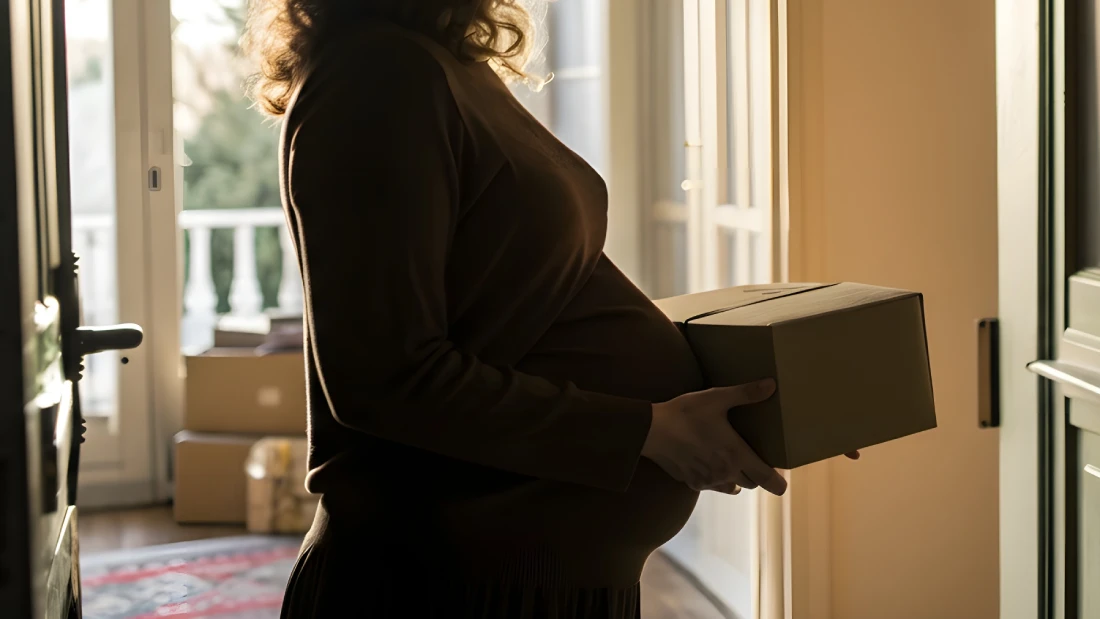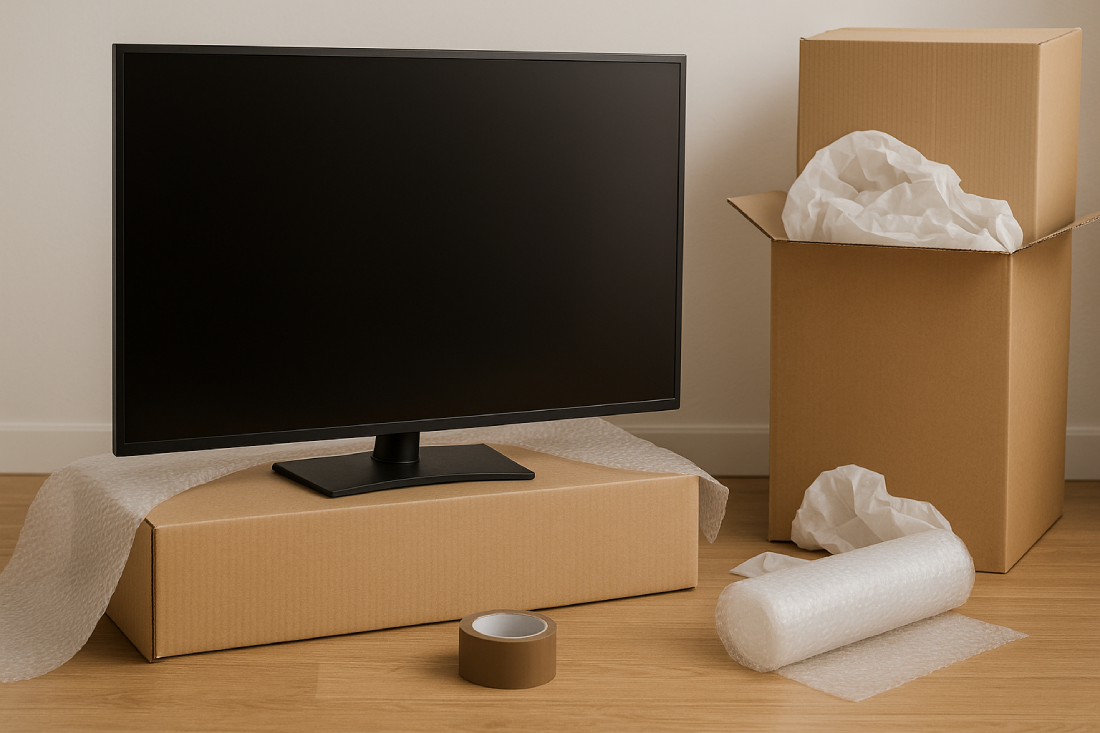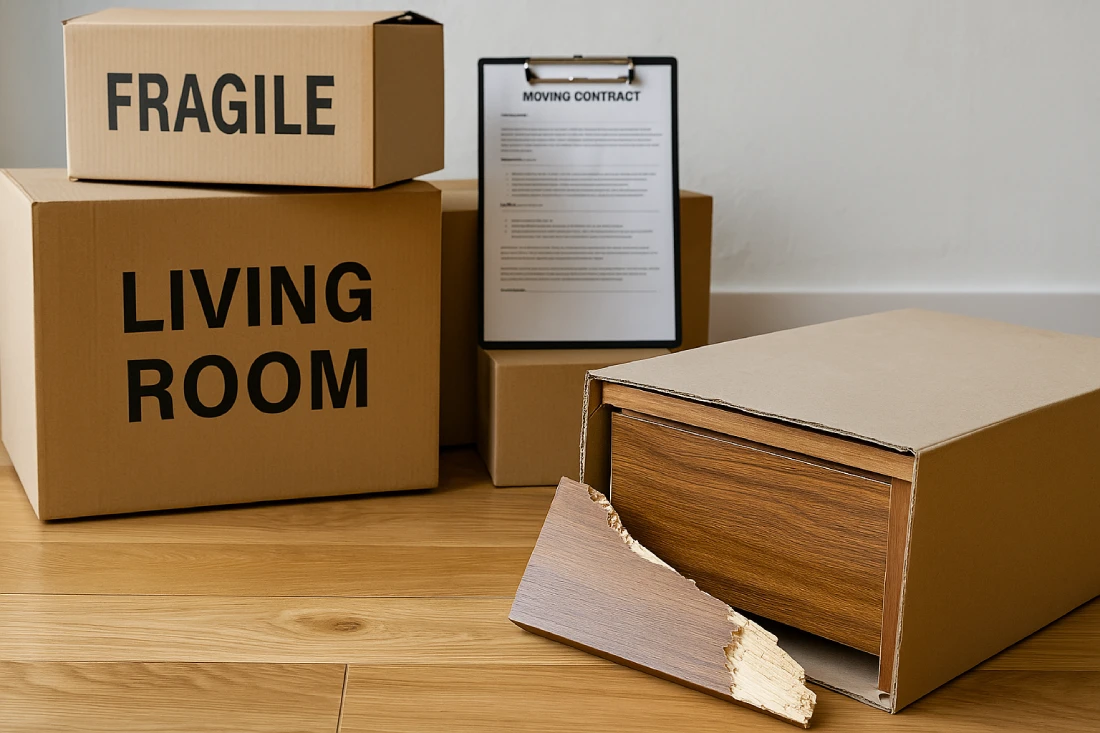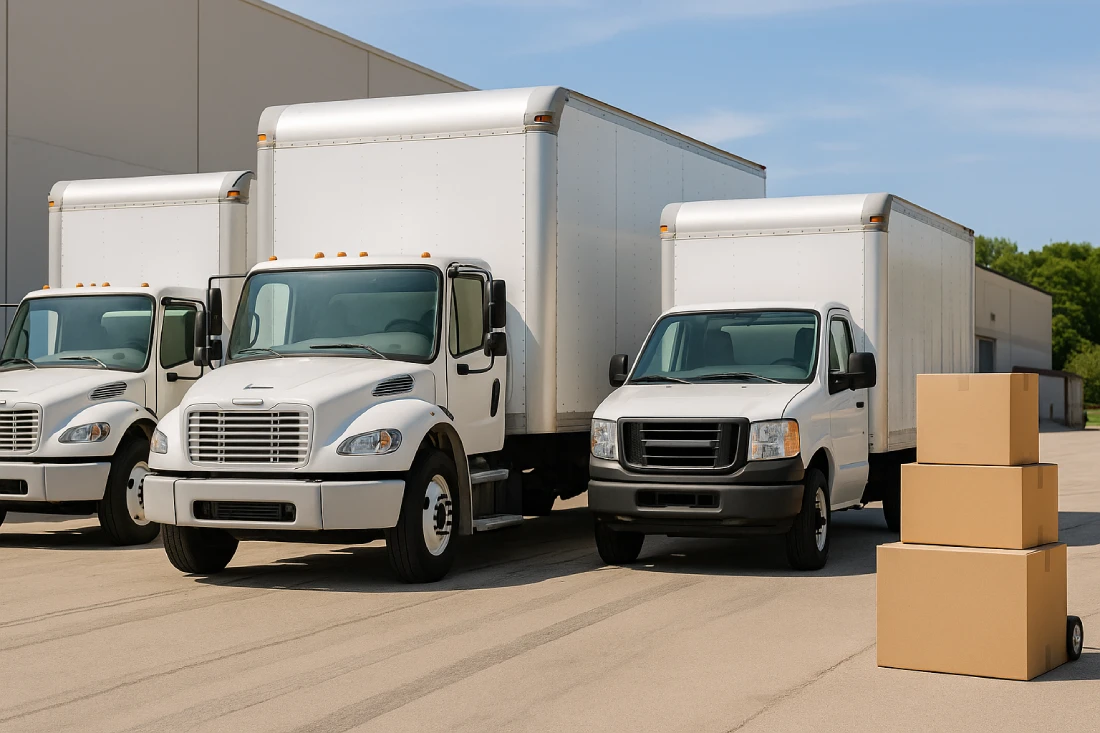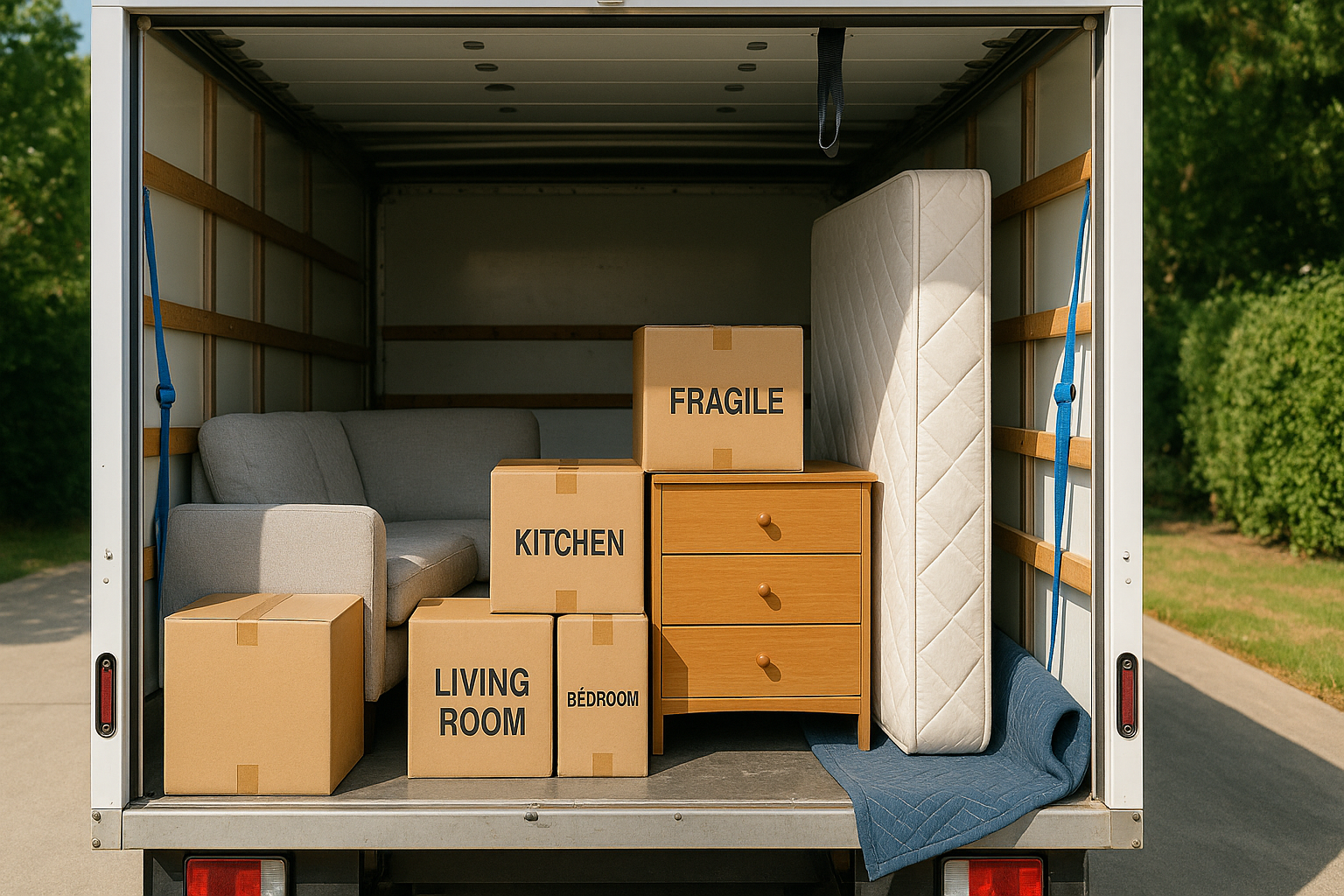Moving while pregnant has special challenges beyond typical moving stress. Pregnant women need to think about their physical limits, plan carefully, and put their health and their baby's health first. With good planning and help, you can move safely during pregnancy.
This article covers important safety aspects of moving while pregnant, including tips for each trimester, lifting guidelines based on your stage of pregnancy, environmental dangers to avoid, and ways to keep up with prenatal care during your move. These tips will help protect your health while managing your move.
Is It Safe to Move While Pregnant?
The good news is that moving during pregnancy is usually safe for most women with normal pregnancies. However, safety depends on several things, including your current health, how far along you are, and how you approach the moving process.
According to the American College of Obstetricians and Gynecologists (ACOG), most pregnant women can safely help with a move if they take proper precautions, listen to their bodies, and avoid doing too much. The main thing is changing activities based on your pregnancy stage and any specific health concerns.
When to Consult Your Doctor
Before planning your move, talk with your healthcare provider about your moving plans, especially if you have any pregnancy complications or risk factors. Your doctor can give you personal advice on safe lifting limits, recommend specific precautions based on your medical history, and help you plan to maintain regular prenatal care throughout your move.
- A high-risk pregnancy.
- History of preterm labor.
- Placenta previa.
- Gestational hypertension.
- Multiple gestation (twins, triplets).
- Any pregnancy complications.
Trimester-by-Trimester Moving Tips
Each stage of pregnancy brings different physical and emotional challenges for pregnant women during a move. From first-trimester tiredness and morning sickness to third-trimester mobility issues, understanding these trimester-specific considerations is important for planning a safe and comfortable move.
First Trimester (Weeks 1-13)
While many women don't show during this period, the first trimester often brings significant tiredness and morning sickness.
- Energy management: Work in short bursts and rest often.
- Morning sickness strategy: Pack during times of day when you feel least nauseated.
- Lifting guidelines: While you can typically lift up to 36 pounds safely, tiredness may reduce this.
- Emotional considerations: Hormone changes can make moving stress worse; be kind to yourself.
Emma T., who moved at 11 weeks pregnant, shares: "I didn't expect the exhaustion to hit me so hard. Breaking packing into 30-minute sessions followed by rest was a game-changer."
Second Trimester (Weeks 14-27)
Often called the "golden period" of pregnancy, the second trimester is generally the best time to move. Consider this your window of opportunity if you can choose when to move.
- Increased energy: Take advantage of the energy boost many women experience.
- Reduced nausea: Morning sickness typically gets better, making packing easier.
- Visible pregnancy: Your growing bump helps remind others that you need help.
- Better mobility: You're not yet having the significant mobility challenges of late pregnancy.
Third Trimester (Weeks 28-40+)
Moving in your third trimester is most challenging, but it may be unavoidable sometimes. If moving during the third trimester is necessary, professional help is a must, not just an option. Some doctors recommend avoiding moves altogether after 36 weeks unless absolutely necessary.
- Significantly limited mobility: Your growing belly affects balance and reach.
- Increased fatigue: Energy levels typically decrease as your body prepares for birth.
- Back strain risk: The hormone relaxin loosens joints, increasing injury risk.
- Swelling: Standing for long periods may worsen pregnancy swelling.
Lifting and Physical Activity Guidelines
Understanding your body's changing abilities during each trimester is important for a safe move while pregnant. Weight-lifting limits decrease from up to 36 pounds in the first trimester to 18 pounds or less in late pregnancy, and your balance, mobility, and stamina change significantly throughout pregnancy.
Evidence-Based Lifting Limits by Trimester
These guidelines apply to occasional lifting. For repetitive lifting (multiple boxes), reduce these limits by 30-50%.
- Early pregnancy (first trimester): Up to 36 pounds for occasional waist-level lifts with proper technique.
- Mid-pregnancy (second trimester): Gradually reduce to 18-26 pounds as your center of gravity shifts.
- Late pregnancy (third trimester): Limit to 18 pounds or less; consider letting others do all lifting when possible.
Safe Lifting Techniques
If you must lift items during pregnancy, follow proper techniques to protect yourself and your baby. According to the American Pregnancy Association, you should maintain good posture, keep objects close to your body, use your legs (not back) for power, and stay within the recommended weight limits for your trimester.
- Keep objects close to your body and at waist level.
- Bend at the knees, not the waist.
- Avoid twisting your torso while lifting.
- Maintain a wide stance for better balance.
- Use your legs, not your back, to generate lifting power.
- Never lift from floor level or above shoulder height.
When to Hire Professional Help
Hiring professional movers is an important investment during pregnancy as they can safely handle all heavy lifting and hard tasks. Professionals can manage all furniture, appliances, heavy boxes, and awkward items that could put you and your baby at risk. Consider hiring professional moving help if your move includes:
- Large furniture and appliances.
- Heavy boxes (books, kitchenware).
- Awkward or bulky items.
- Items requiring ladder use.
Environmental and Home Safety Precautions
Moving often involves exposure to potential environmental hazards such as cleaning chemicals, paint fumes, mold, and pest control residues that can pose risks during pregnancy. Pregnant women need to be especially careful about these exposures, as many common substances encountered during moving can cross the placental barrier and potentially affect baby development.
Chemical Exposure Risks
- Cleaning products: Choose pregnancy-safe, non-toxic cleaners or let someone else do the cleaning.
- Paint and varnish: Avoid freshly painted rooms; if painting is necessary, use low-VOC paint and make sure there's good air flow.
- Lead dust: Homes built before 1978 may contain lead paint; avoid disturbing old paint during moves.
- Pest control chemicals: Ask about recent treatments in new properties.
Biological Hazards
When checking your new home, bring someone who can look at potential problem areas for you, like crawl spaces, basements, or attics.
- Cat litter: Avoid handling due to toxoplasmosis risk; let someone else handle this task during packing and unpacking.
- Mold: Wear an N95 mask if you must pack in damp areas or consider letting others do these tasks.
- Rodent droppings: Never clean these up yourself; they can carry hantavirus, which is particularly dangerous during pregnancy.
Packing, Planning, and Moving Logistics
Creating a detailed moving plan well in advance can greatly reduce both physical strain and stress during pregnancy. By organizing tasks according to your trimester, getting enough help, and building in extra time for rest, you can protect your health while successfully moving to your new home. For additional packing shortcuts and stress-reducing strategies, check out our moving hacks guide.
Creating a Timeline Around Your Due Date
- Allow 30-50% more time than you normally would for the entire moving process.
- Start packing non-essentials at least 8 weeks before your move date.
- Plan to be completely moved at least 4-6 weeks before your due date.
- Schedule the actual moving day for mid-week when you're likely to have more energy.
Strategic Packing Approaches
- Box weight: Use smaller boxes than normal to keep weights manageable.
- Labeling system: Clearly mark boxes with contents and room destination.
- Priority system: Color-code boxes by unpacking priority.
- Delegation: Create detailed lists for helpers so they can work independently.
Hospital and Essentials Bag
Pack a separate, easily accessible bag containing:
- Complete prenatal medical records.
- Insurance information.
- Birth plan (if applicable).
- Medications and prenatal vitamins.
- Comfortable clothes and toiletries.
- Phone charger and important contact list.
- Baby essentials if you're in your third trimester.
Keep this bag with you during the move, not packed in the moving truck.
Travel and Transportation Safety
Whether moving across town or cross-country, pregnant women need specific travel safety strategies to protect both mother and baby. Sitting for long periods during travel increases blood clot risk, while improper seatbelt positioning or lack of regular breaks can lead to complications. Following trimester-appropriate guidelines is important for a safe journey.
Car Travel Safety
- Take breaks every 60-90 minutes to walk and stretch.
- Wear seat belts correctly: lap belt below your bump, shoulder belt between breasts.
- Use pregnancy seat belt positioners if recommended by your doctor.
- Stay hydrated but plan for frequent bathroom breaks.
Air Travel Considerations
- Check airline policies; many don't allow travel after 36 weeks.
- Request an aisle seat for easier bathroom access.
- Wear compression stockings for flights over 4 hours.
- Stand and stretch hourly to reduce blood clot risk.
- Consider getting a medical clearance letter if you're in your third trimester.
For long-distance moves, consider breaking the journey into shorter segments with overnight stops.
Healthcare Continuity When Relocating
Keeping up with prenatal care during a move requires advance planning to make sure you have uninterrupted medical support for both mother and baby. This includes transferring complete medical records, scheduling appointments with new doctors before relocating, and understanding potential insurance coverage changes in your new location to avoid gaps in care.
Transferring Medical Records
- Request complete records 3-4 weeks before moving.
- Ask for both digital and physical copies.
- Include all ultrasounds, lab work, and specialist notes.
- Have your current provider write a summary letter of your pregnancy.
Finding a New Healthcare Provider
- Start searching for new providers at least 8 weeks before your move.
- Check which practices are accepting new patients and your insurance.
- Schedule your first appointment before moving if possible.
- Research hospitals and birth centers in your new location.
If moving to a new state, check if your health insurance needs to be updated and what prenatal services are covered in your new location.
Rest, Nutrition, and Self-Care
Taking care of your physical and emotional needs is important during a move while pregnant. Physical work, stress, and changed routines can affect both you and your baby. Make self-care through rest, nutrition, and stress management your top priority during your move.
Hydration and Nutrition
- Drink plenty of water (aim for 80-100 oz daily)
- Pack a cooler with healthy snacks you can easily reach during packing and moving.
- Plan simple, healthy meals during the moving period.
- Don't skip meals, even when you're busy.
Rest and Pacing
- Schedule regular rest breaks throughout the day.
- Limit active packing/moving to 2-3 hour blocks.
- Keep a comfortable rest space until the final moving day.
- Listen to your body and stop when you're tired, not when tasks are done.
Warning Signs: When to Stop and Call Your Doctor
Stop what you're doing and contact your healthcare provider if you experience:
- Vaginal bleeding or fluid leakage
- Contractions or regular cramping
- Decreased baby movement
- Dizziness or lightheadedness
- Severe headache or vision changes
- Chest pain or trouble breathing
- Sharp abdominal pain
- Calf pain or swelling (possible blood clot)
Keep your phone charged and with you at all times during the move.
Final Thoughts
Moving while pregnant is challenging and requires good planning, realistic expectations, and putting your health first. By following the guidelines for each trimester, understanding your physical limits, keeping up with healthcare, and practicing good self-care, you can move successfully while keeping you and your baby safe.
Remember that asking for help is a smart strategy for a healthy pregnancy. Whether you hire professional movers, ask friends and family, or scale back your moving plans, the goal is to move to your new home without risking your health.
With the right approach, you can handle both creating a new home and preparing for your new baby.
Moving Muscle provides labor-only moving services in Charlotte and Raleigh, North Carolina. Allowing you to hire flexible and affordable professional help for loading and unloading items.
Frequently Asked Questions
How much can I lift while pregnant?
Early pregnancy: Up to 36 lbs (occasional, waist-level lifts). After 20 weeks: Limit to 18–26 lbs (and less for repeated lifting). Avoid lifting from the floor or overhead, and never lift heavy furniture or boxes alone. Always keep loads close to your body and don't twist. If unsure, ask your doctor and let others handle heavy lifting.
What are the main risks of moving while pregnant?
The main risks include getting too tired, lifting injuries and falls, heat exhaustion or dehydration, exposure to harmful chemicals (cleaning agents, paint, lead dust), and disruption of prenatal care.
What should I avoid when moving while pregnant?
Avoid lifting heavy or awkward objects, using ladders or reaching overhead, standing too long, or working in hot conditions, handling strong chemicals, or cleaning up mold, rodent droppings, or old paint (risk of lead), changing cat litter (risk of toxoplasmosis), and skipping meals, water, or rest.
Sources
American College of Obstetricians and Gynecologists. (n.d.). Exercise during pregnancy. https://www.acog.org/womens-health/faqs/exercise-during-pregnancy
American Pregnancy Association. (n.d.). Exercise guidelines during pregnancy. https://americanpregnancy.org/healthy-pregnancy/pregnancy-health-wellness/exercise-guidelines-during-pregnancy/
